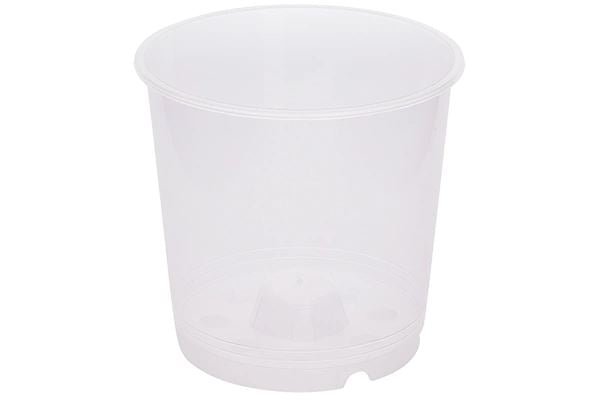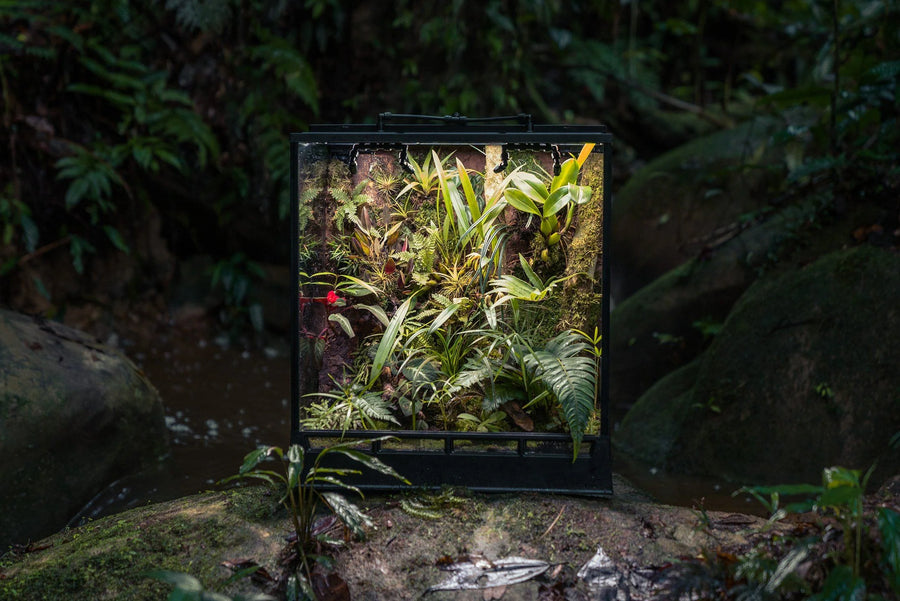Kalanchoe
Kalanchoe (pronounced kal-un-KOH-ee) is one of those houseplants that surprises people. At first glance, it looks like just another succulent. But give it a little light, the right care, and some time, and it will reward you with clusters of bright flowers that last for weeks.
Kalanchoe is a genus of over 125 species, most of which are native to the dry, tropical regions of Madagascar, with others found scattered across parts of southeastern Africa, the Arabian Peninsula, and even parts of Asia. In the wild, they grow in rocky outcrops, dry shrublands, and sandy soils, often clinging to cliff faces or exposed areas where other plants can’t survive.
One of the most well-known species is Kalanchoe blossfeldiana, the flowering variety you’ll find in most plant shops, with its bold red, pink, yellow, orange, or white blooms. It was discovered in Madagascar and introduced to Europe in the 1930s by German botanist Robert Blossfeld, for whom it was later named.
This guide will go over everything you need to know about successfully growing Kalanchoe indoors.
Are Kalanchoe Pet-Safe?
No. It’s best to keep Kalanchoe out of reach of pets and small children. All parts of the plant are toxic if ingested. The culprit is a chemical compound known as bufadienolide, which can cause vomiting, diarrhea, and more serious heart-related symptoms in cats, dogs, and other animals. Don’t let the pretty blooms fool you, as this plant is strictly ornamental!
What lighting do Kalachoe prefer?
Kalanchoe thrives in bright, indirect sunlight. A south-facing window with filtered light is perfect. Too much direct sun can scorch the leaves, while too little light will lead to leggy, stretched-out growth and fewer flowers.
Pro tip: If your plant starts leaning or stretching toward the light, it needs more brightness or a better spot altogether.
What humidity is best for Kalachoe?
Kalanchoe is adapted to dry climates, so it doesn't need high humidity. Average indoor humidity levels (30–50%) are fine. In fact, too much moisture in the air can encourage rot and mildew. Keep it away from humidifiers, bathrooms, or kitchens with poor airflow.
How often should I water my Kalachoe?
Like most succulents, Kalanchoe prefers to dry out between waterings. A good rule of thumb: water when the top 1–2 inches of soil feel dry to the touch. Water thoroughly, then let the excess drain completely.
Avoid the common mistake of overwatering as soggy soil is the fastest way to kill this plant.
What soil is best for Kalachoe when repotting?
When it's time to repot, give your Kalanchoe a fast-draining mix. We recommend our Desert Mix, which is designed to mimic the gritty, low-nutrient soils of its native environment. It allows for proper aeration and reduces the risk of root rot.
Repotting is a great opportunity to propagate your Kalanchoe. Just cut a healthy leaf or stem segment, place it in water, and wait for roots to form. Once you see strong roots, pot it up in the same Desert Mix, and you’ve got a new plant.
Common Problems When Growing Kalanchoe
Kalanchoe are relatively easy succulent plants that require minimal maintenance. However, they can occasionally encounter issues.
Reblooming
Similar to Poinettias, Kalanchoe needs short daylight periods (about 12–14 hours of darkness) to bloom again. Simulate winter light conditions by placing it in a dark room or covering it for part of the day. Feeding the plant during its active growing season can also help to encourage blooms.
Brown Leaves
Brown leaves are usually caused by sunburn (too much direct light) or underwatering. You should your light exposure and soil moisture. Additionally, brown spots and bruises might indicate overwatering.
Leggy Growth
With most succulents, leggy or stunted growth is a sign of not enough light. Move it to a brighter spot and consider pruning back the leggy stems for bushier growth.
Wilting
Wilting leaves are sometimes tricky to determine the root cause of. One one hand, it could be too much water which has made the roots rot and therefore insufficiently take up water to the plant. To check, feel the soil and loosely tease the roots. If it’s soggy, hold off on watering and make sure the pot drains well.
If it’s bone-dry, your plant’s overdue for a drink which could be causing it to wilt. It should regain strength to hold up leaves within 8-12 hours of watering.
Still Need Help With Your Houseplants?
We’re here to help. Whether you're troubleshooting leaf issues or want more tips on propagation and aroids, drop us a message on socials or check out our plant care A-Z blog.







